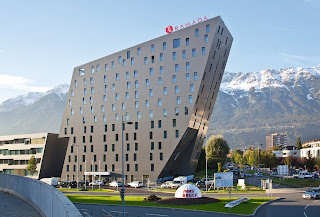 |
| Ambras Castle Inssbruck (photo credit: www.insbruck.info) |
The Kunsthistorisches
Museum is one of the most visited tourist sites in Vienna, and
indeed one of the most iconic buildings in the entire country. This beautiful
Renaissance building houses some fascinating temporary exhibitions, but also
has some equally fascinating permanent ones. The Strasser Glass Collection,
permanently on display at Ambras Castle, is a fine example of this.
The Strasser Collection is named
after Professor Rudolph von Strasser who won the lifetime
achievement OscART
award for his work in the field. The Strasser glass collection is one of the
most important collections of its kind across Europe. Europe has been home to some
of the most renowned centres for glass work, particularly during the
Renaissance and Baroque periods.
This wonderful collection has some
truly fine specimens from this period, from some of the most well-known centres
for glass making, including Innsbruck, Silesia and Venice. The collection is
quite large, and the beauty of each delicate glass object will make you want to
stop and marvel of how it must have been produced and how much pleasure its
owners must have derived from it!
Speaking of production techniques,
apart from the collection, the exhibition also explains the meticulous process
of historical glass arts, including blowing glass objects and glass decoration.
You also get a glimpse, rather quite a good understanding of, the history of
glass making in Europe, and how it evolved over time. Seeing the illustrative
examples in the collection makes things even more fascinating. You can also see
how the designs and preferences change from one period to the next, which is
very interesting.
If you are in the least bit interested
in crafts and the processes of making things, and of course, if you like to see
beautiful objects, do not miss this exhibition in Ambras Castle at the Vienna
Museum of Art History.Watch a video of Ambras Castel here.




